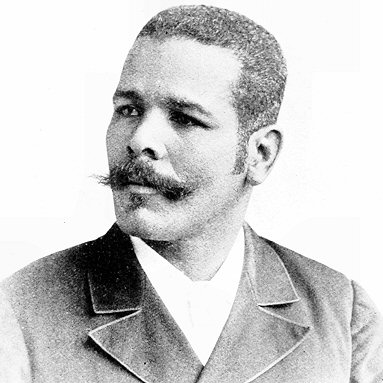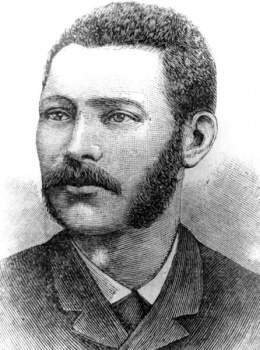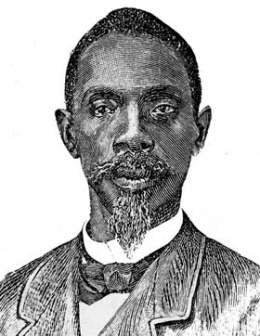SANTIAGO DE CUBA
When the Pact of Zanjón (Paz de Zanjón) was signed to finish the Ten Years War in 1878, some leaders of the Liberation Army, such as Calixto García Íñiguez, Antonio Maceo Grajales and his brother Jose Maceo Grajales, Guillermo Moncada and Emilo Nuñez, denied the agreement, since it didn’t achieve the independence of Cuba. Subsequently, they decided to carry on the armed struggle against the regime. Antonio Maceo Grajales, José Maceo Grajales and Guillermo Moncada were the sons of Santiago de Cuba. This second phase of the Independence War, called as Little War (Guerra Chiquita), took about one year, and ended with the triumph of the Spanish government.



In the meantime, the American businessmen that were using the new modern techniques, gained power in the sugar production and its trade. Consequently, the economic crisis on the island deepened and day by day, Cuba began to become a part of US trade. On the other hand, the atmosphere of freedom in the United States paved the way for many independence fighters who were exiled from Cuba or had to flee to organize in this country and developed strategies for Cuba. On the island, those who wanted independence began to gather again.
Shortly after José Martí, who wanted to join the struggle a in Cuba, set foot on the island, he was shot and killed by Spanish soldiers near the town of Palma Soriano, 50 km away from Santiago de Cuba, in the area called Dos Rios on May 19, 1895. Although the murder of José Martí created a demoralization among those fighting for the independence of the island and those who support them, Máximo Gomez and Antonio Maceo didn’t stop the war. A year later, Antonio Maceo was also killed. Even though the Cuban rebel army had lost its leaders like José Martí and Antonio Maceo, the rebels were successful in defeating the Spanish in various encounters, so that the island to the east of Camaguey was under their control at the end of 1896. The success of the rebel army in invasion from the east to west, had great repercussions all over the world, but also in the US. However, the US government had some projects about Cuba that was totally different than that of the population in the US that were sympathizing the rebels in Cuba. Cuba, the biggest island in the Caribbean Sea, was still the key for the Gulf of Mexico and the world should be shared once again among the imperialist countries, because there were new actors on the scene.
When the Pact of Zanjón (Paz de Zanjón) was signed to finish the Ten Years War in 1878, some leaders of the Liberation Army, such as Calixto García Íñiguez, Antonio Maceo Grajales and his brother Jose Maceo Grajales, Guillermo Moncada and Emilo Nuñez, denied the agreement, since it didn’t achieve the independence of Cuba. Subsequently, they decided to carry on the armed struggle against the regime. Antonio Maceo Grajales, José Maceo Grajales and Guillermo Moncada were the sons of Santiago de Cuba. This second phase of the Independence War, called as Little War (Guerra Chiquita), took about one year, and ended with the triumph of the Spanish government.



In the meantime, the American businessmen that were using the new modern techniques, gained power in the sugar production and its trade. Consequently, the economic crisis on the island deepened and day by day, Cuba began to become a part of US trade. On the other hand, the atmosphere of freedom in the United States paved the way for many independence fighters who were exiled from Cuba or had to flee to organize in this country and developed strategies for Cuba. On the island, those who wanted independence began to gather again.
Shortly after José Martí, who wanted to join the struggle a in Cuba, set foot on the island, he was shot and killed by Spanish soldiers near the town of Palma Soriano, 50 km away from Santiago de Cuba, in the area called Dos Rios on May 19, 1895. Although the murder of José Martí created a demoralization among those fighting for the independence of the island and those who support them, Máximo Gomez and Antonio Maceo didn’t stop the war. A year later, Antonio Maceo was also killed. Even though the Cuban rebel army had lost its leaders like José Martí and Antonio Maceo, the rebels were successful in defeating the Spanish in various encounters, so that the island to the east of Camaguey was under their control at the end of 1896. The success of the rebel army in invasion from the east to west, had great repercussions all over the world, but also in the US. However, the US government had some projects about Cuba that was totally different than that of the population in the US that were sympathizing the rebels in Cuba. Cuba, the biggest island in the Caribbean Sea, was still the key for the Gulf of Mexico and the world should be shared once again among the imperialist countries, because there were new actors on the scene.
In 1898, a group of Cuban Spanish loyalists run a riot against the new government by destroying the printing machines of four local newspapers that were publishing articles about the atrocities of the Spanish army. Immediately afterwards, on the demand of the ambassador of the US in Havana, the warship USS Maine was sent to Havana to guard the American citizens in Havana. Even though, it was declared that this would be a friendly visit to Havana, predicted for 3 weeks, it was another maneuver of the US to put pressure on the colonial government, consequently to Spain.
The USS Maine arrived in Havana in January 1898, and the cruise ship Montgomery in Matanzas ten days later. On February 15, 1898, the USS Maine was shattered by an explosion that led the warship to sink in the harbor of Havana, dragging the crew with it to the depth of the sea. When the explosion occurred, most of the crew was asleep, or resting, but the high officer of the warship was on the ground at that time. 258 men died during the explosion, whereas 8 men lost their lives hours later than the disaster due to the injuries that they had suffered, making 266 victims in total.
The politicians and the press in the US argued that the USS Maine was sunk by a mine intentionally and claimed Spain as war criminal. The press in the US was exaggerating and distorting the information, even fabricating many nonexistent news. The campaign had great support of the American businessmen that had invested large sums in Cuba, expecting the replacement of Spain by the US in the island. The atmosphere gave the opportunity to the North American press to boost the circulation.
The US used the submerge of the USS Maine as a pretext to declare war against Spain and to interfere in the war between the rebels and Spain in Cuba. Thus, in April 1898 the US government declared officially war against Spain and the troops of the US disembarked east of Santiago de Cuba in June 1898, initiating a period in that Cuba became dependent to the United States economically and politically.
Antonio Maceo Grajales, José
Maceo Grajales and Guillermo Moncada